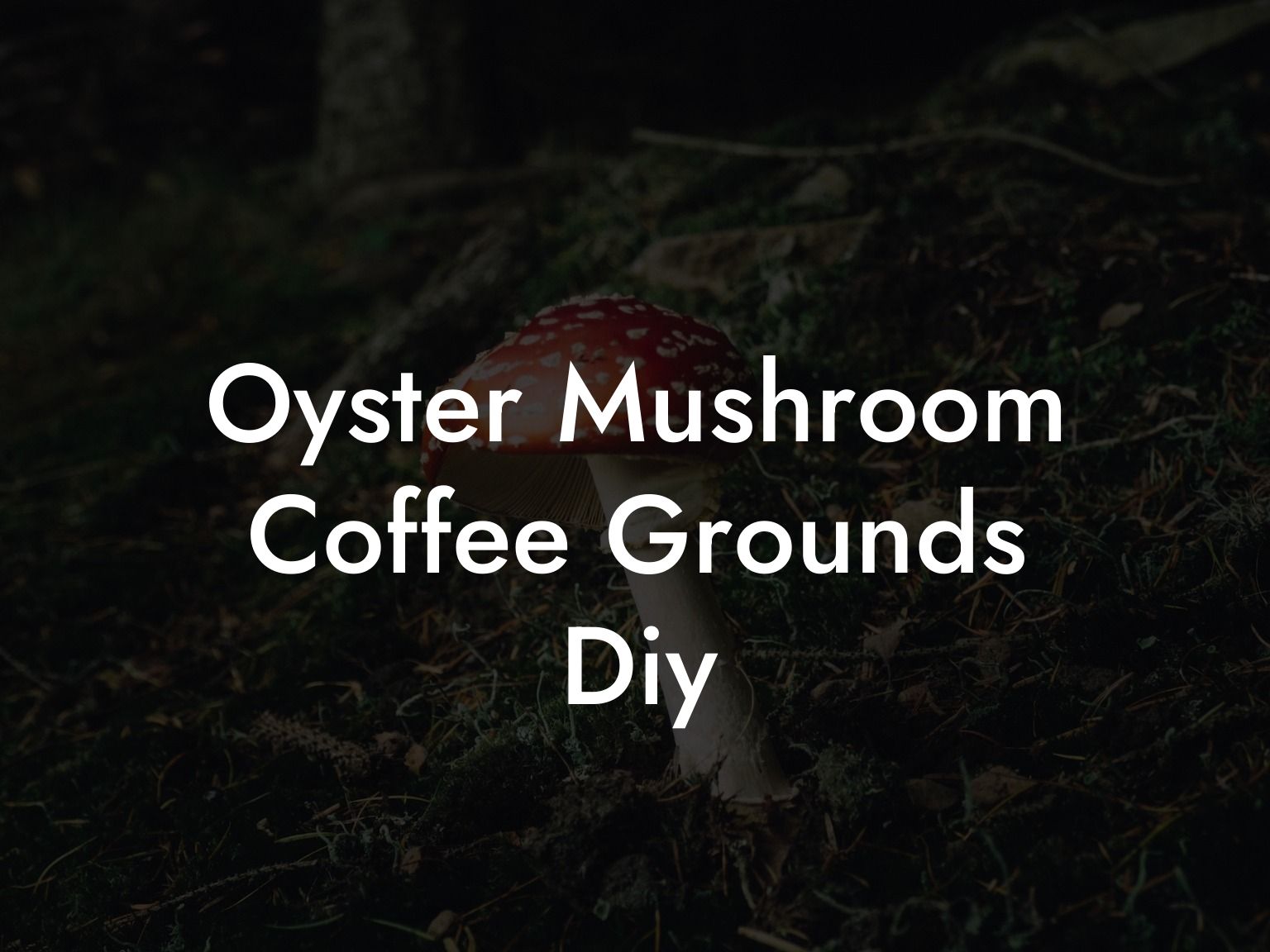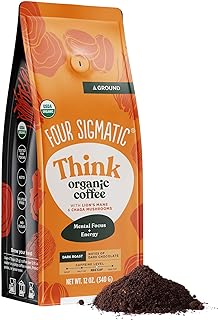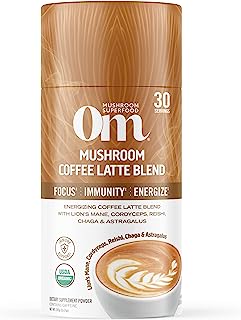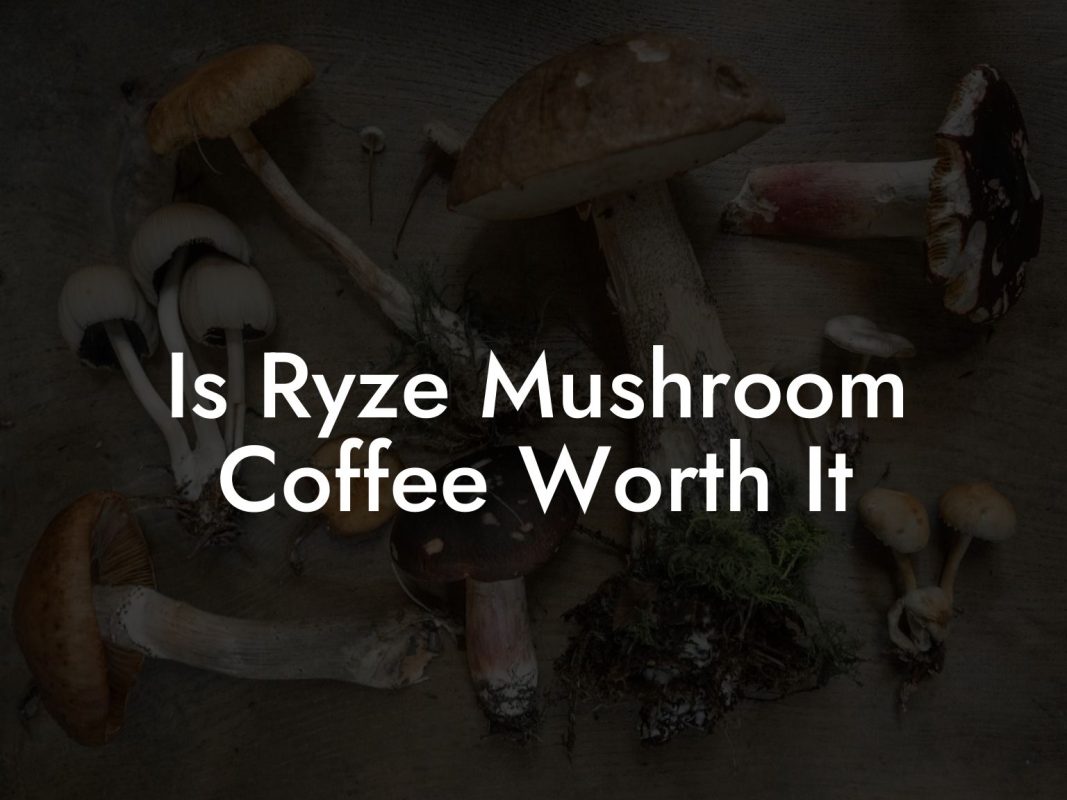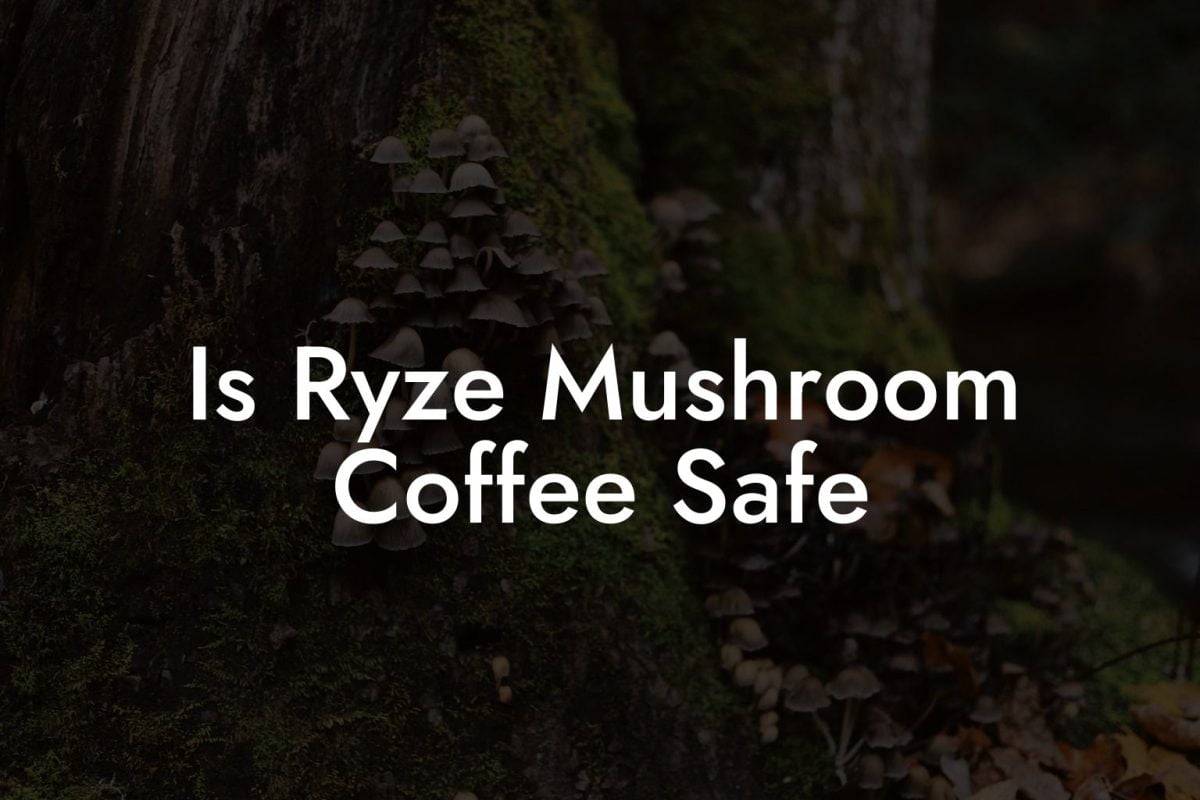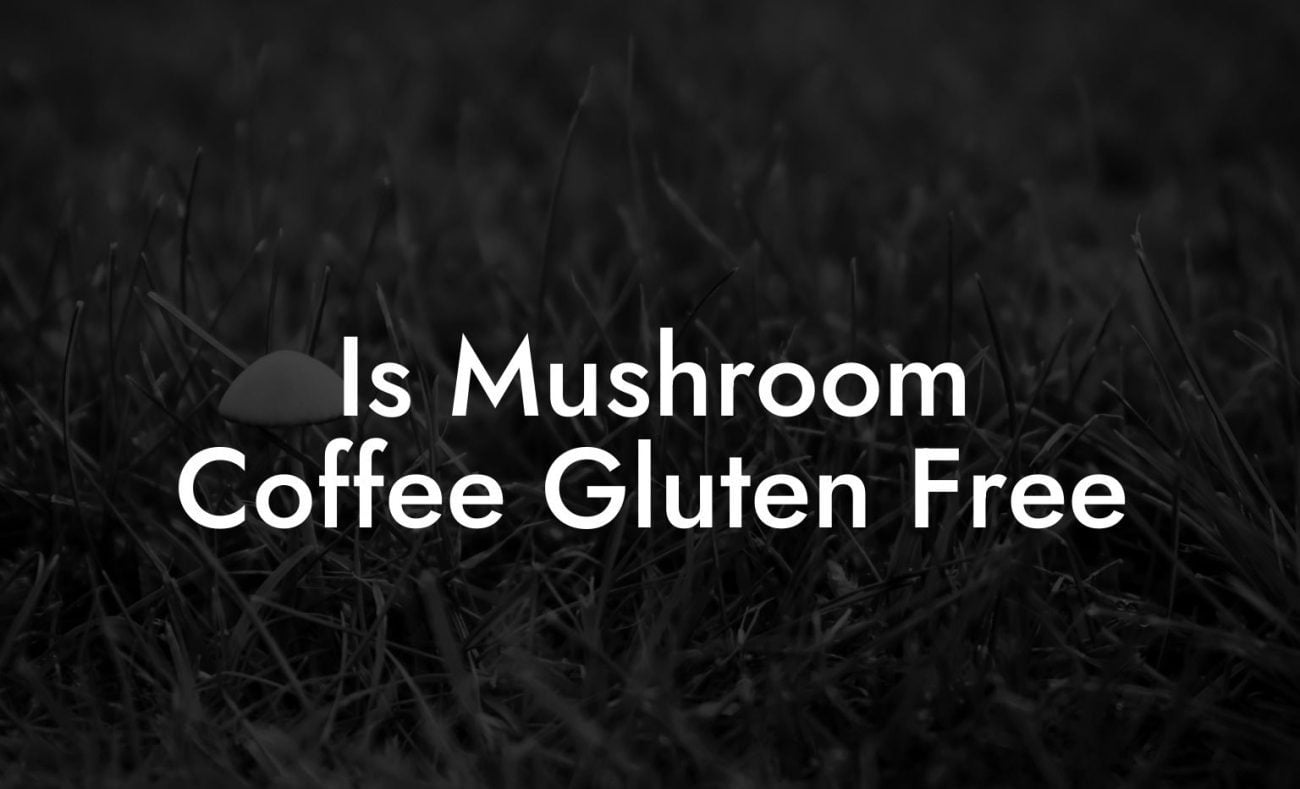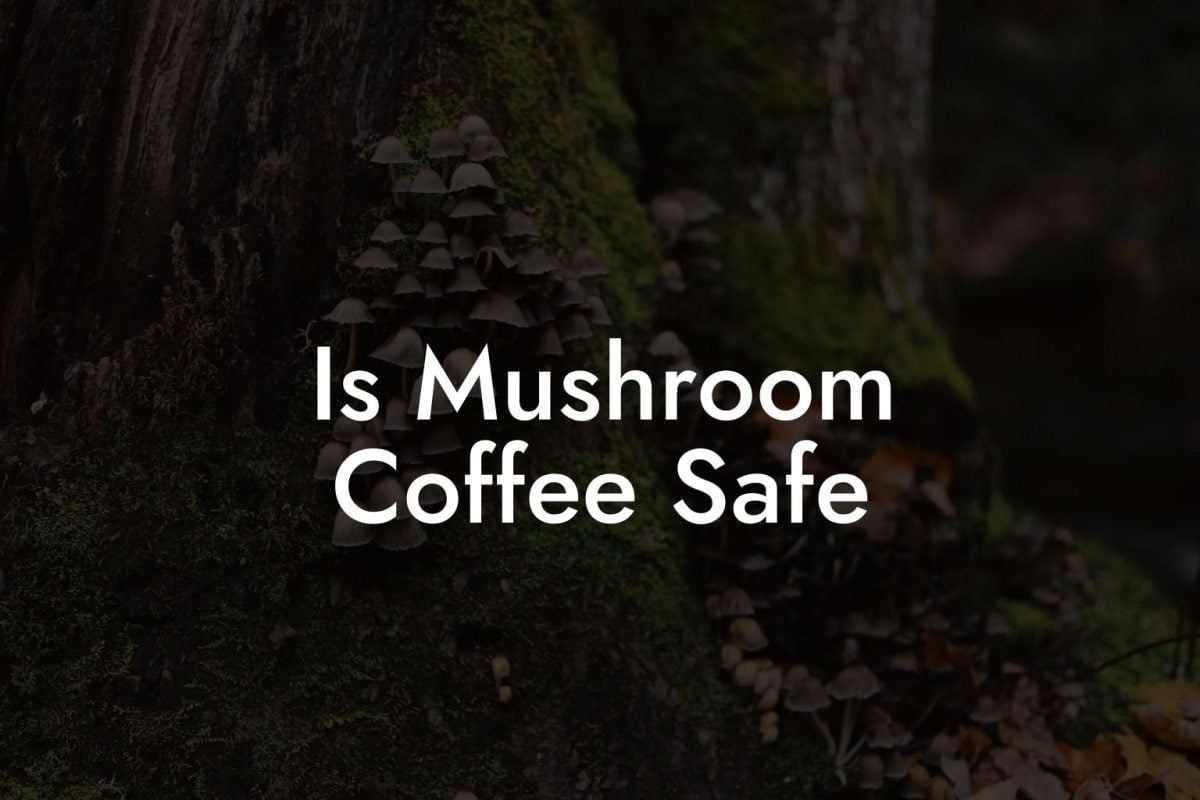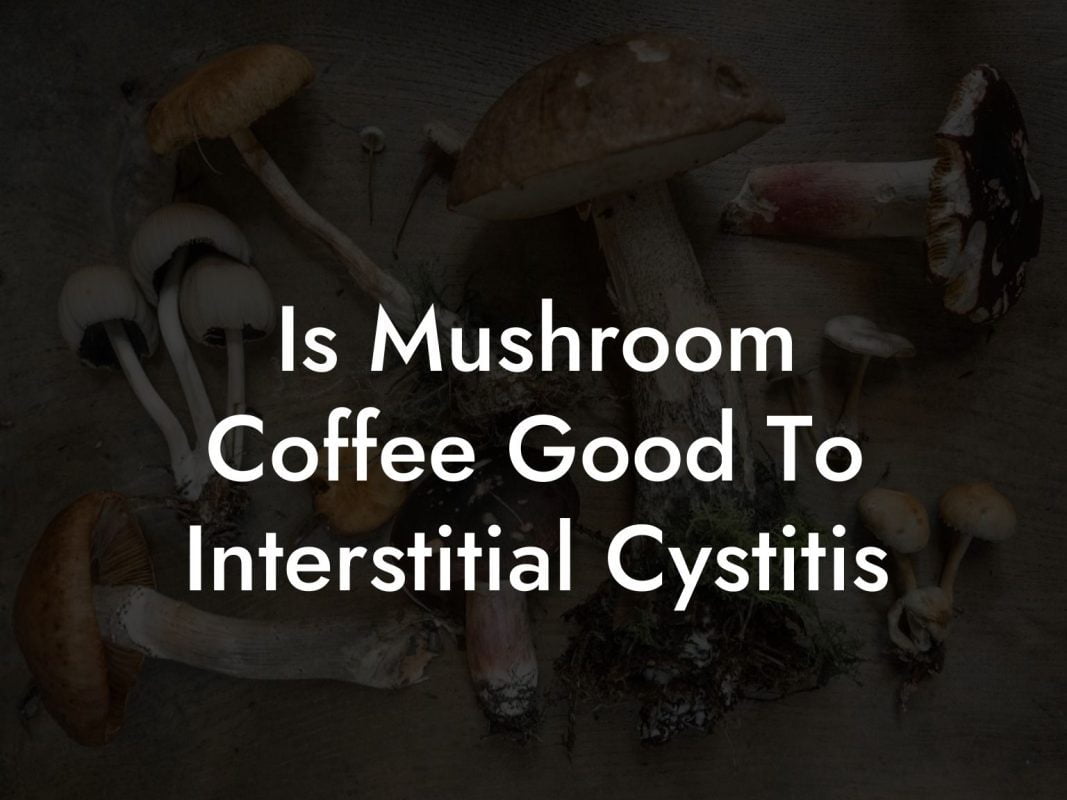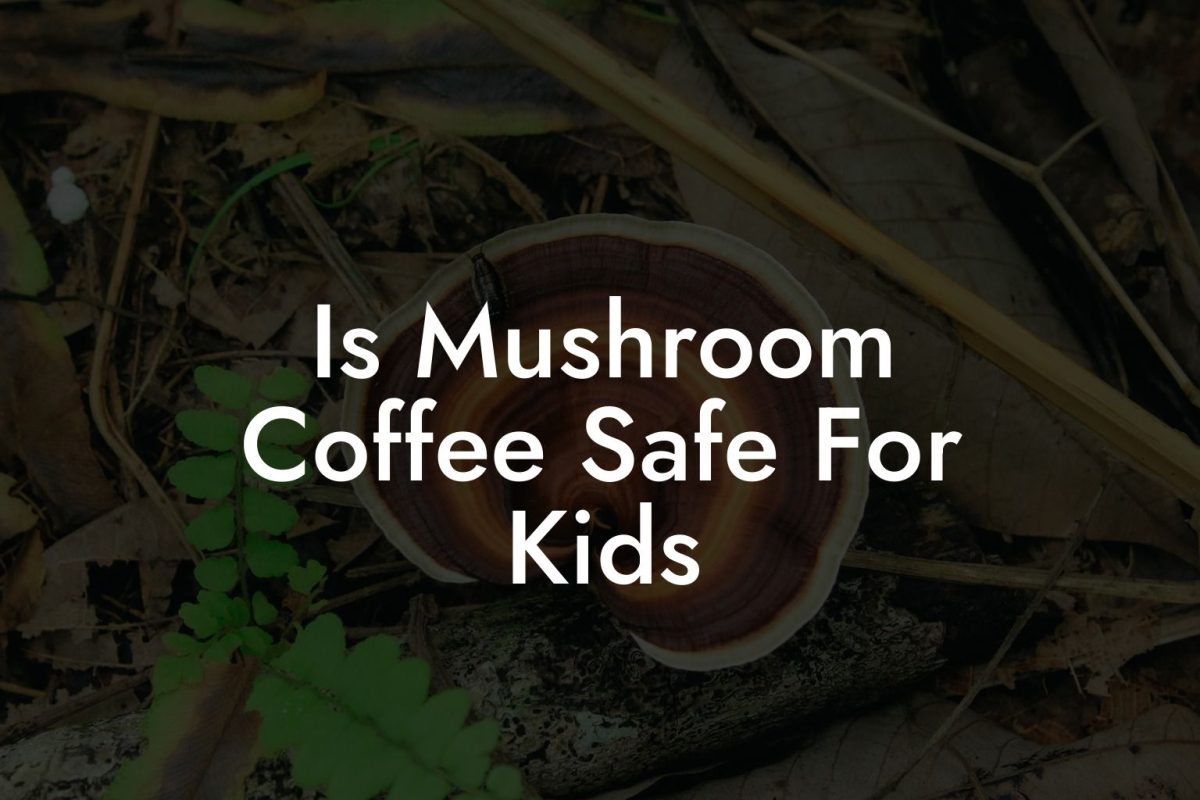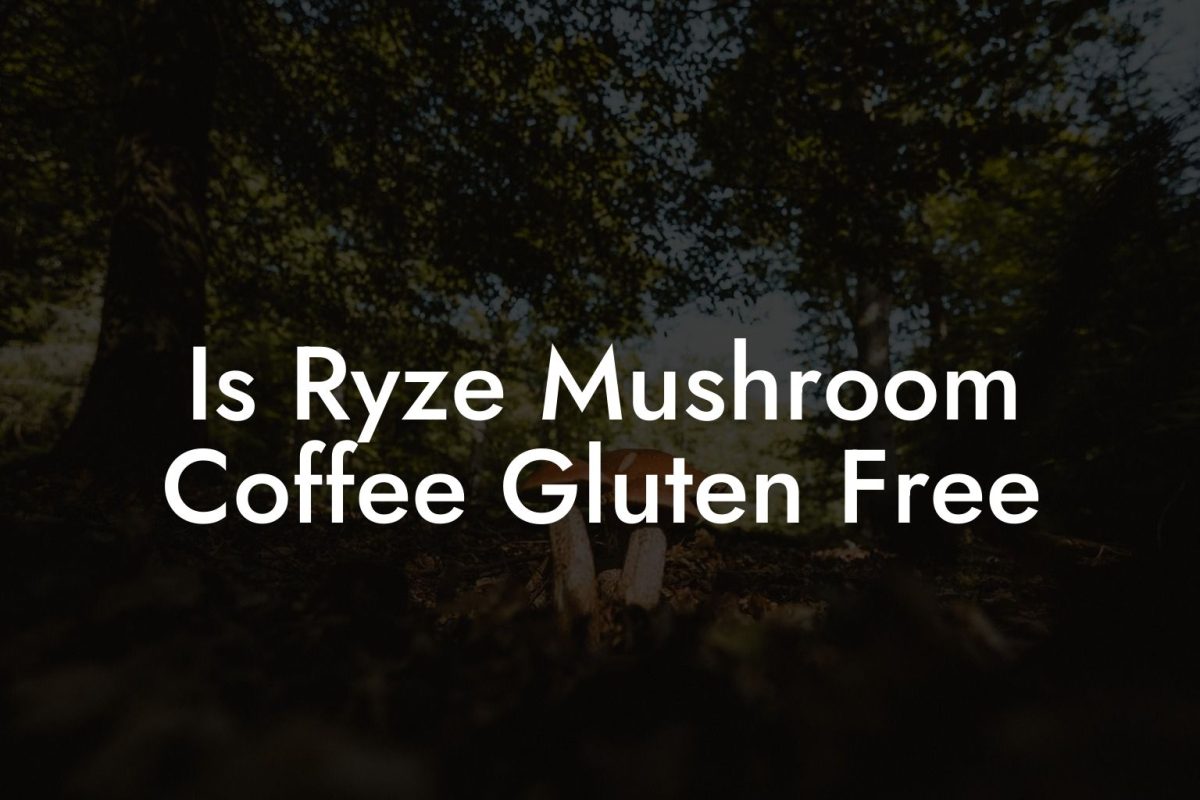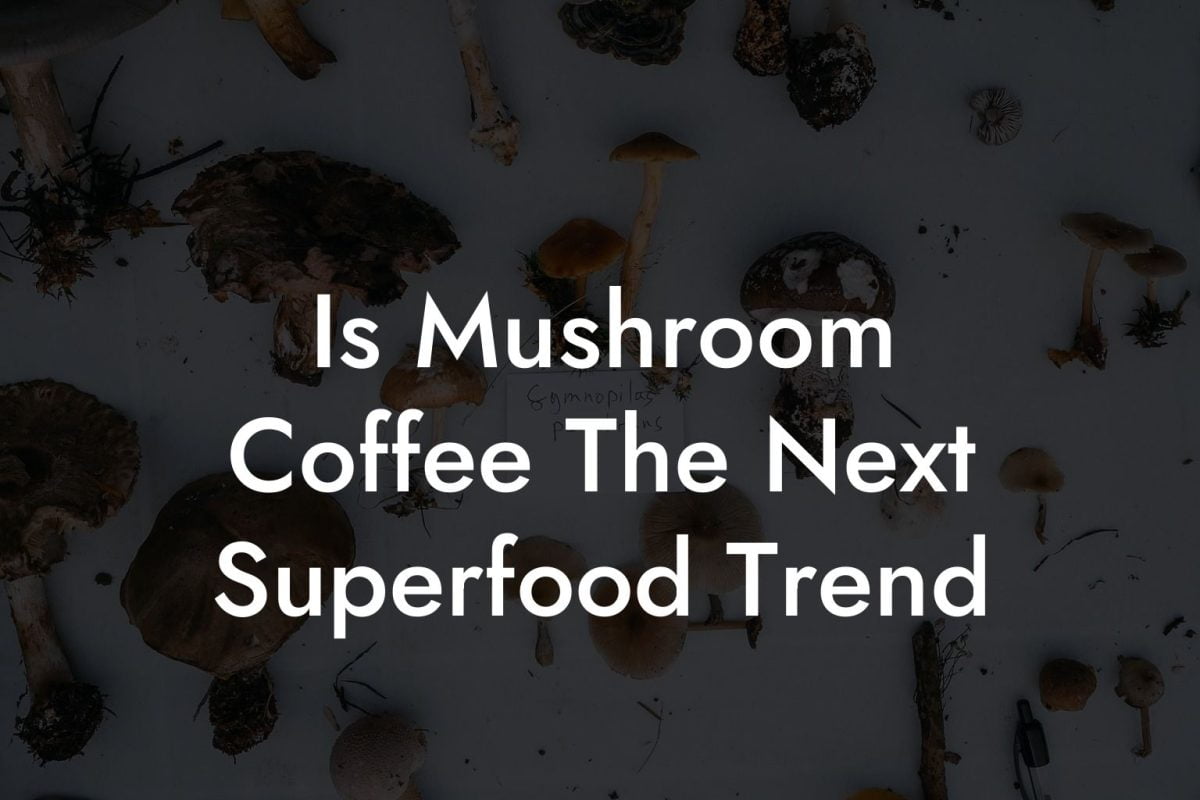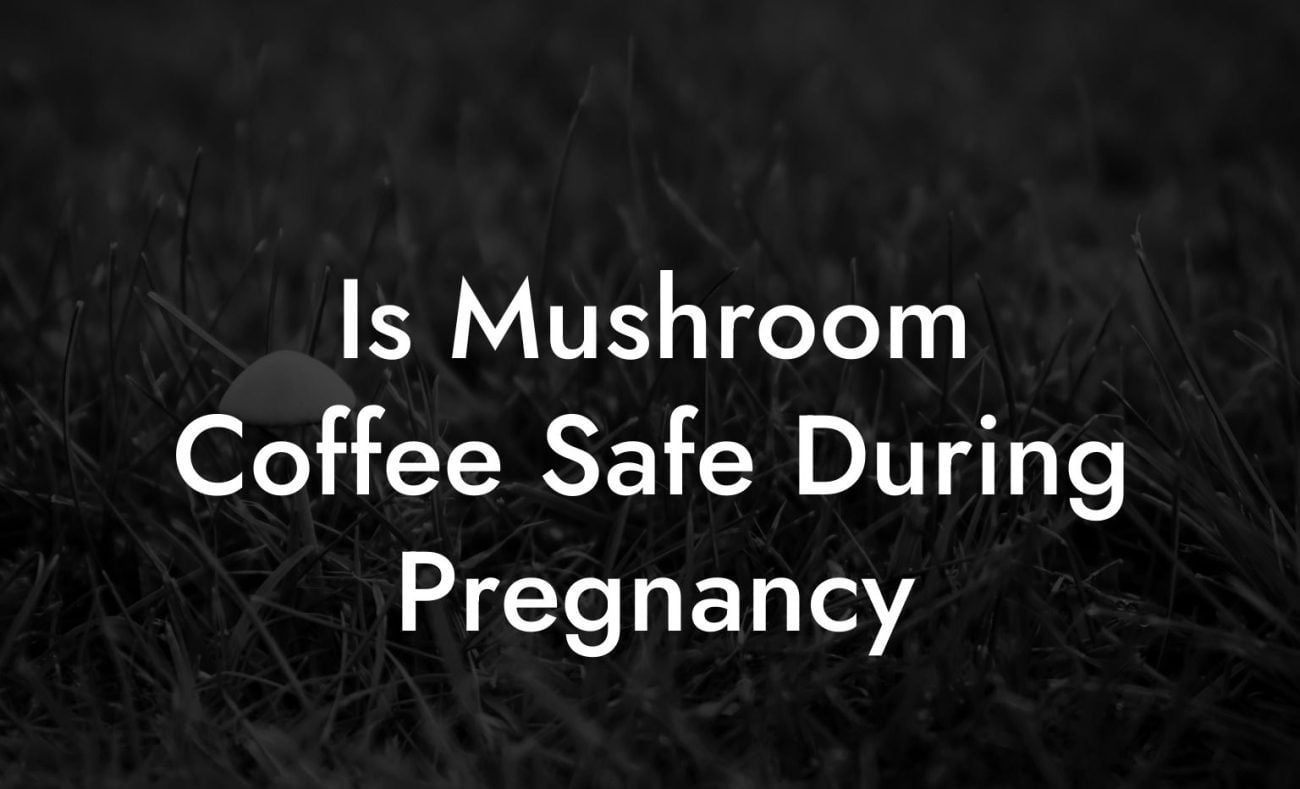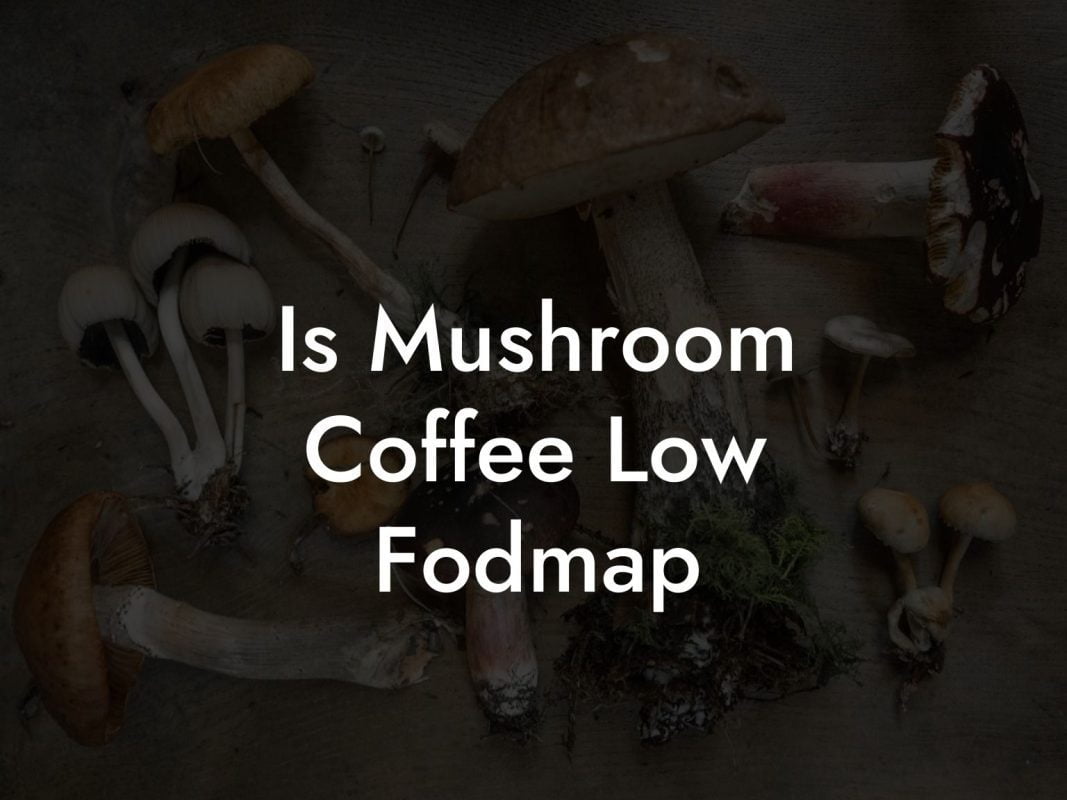Have you ever wondered what happens when your favorite morning brew meets the magic of mushroom cultivation? Picture this: your used coffee grounds, once the lifeblood of your daily caffeine boost, are given a second chance at greatness, as a nutritious substrate for growing delicious, eco-friendly oyster mushrooms. In a world where sustainability meets savvy DIY culture, merging coffee with fungi isn’t just smart, it’s downright revolutionary. Let’s dive into the wild, whimsical world of Oyster Mushroom Coffee Grounds DIY, where upcycling, urban farming, and a sprinkle of Gen-Z ingenuity transform waste into gourmet mushrooms and environmental wins.
Quick Links to Useful Sections
- The Allure of the DIY Oyster Mushroom Revolution
- Diving Deeper: Why Oyster Mushrooms & Coffee Grounds?
- The Science Behind Fungi and Coffee Grounds: A Match Made in Nature
- Essential Tools and Materials for Your Mushroom DIY Project
- A Step-by-Step Guide to Cultivating Oyster Mushrooms from Coffee Grounds
- Step 1: Gather and Prepare Your Substrate
- Step 2: Inoculate With Oyster Mushroom Spawn
- Step 3: Bagging or Containerizing Your Substrate
- Step 4: The Colonization Phase
- Step 5: Initiate Fruiting
- Step 6: Harvesting Your Bounty
- Troubleshooting and Pro Tips: Navigating the Fungal Frontier
- Dealing With Contamination
- Humidity and Temperature: The Delicate Dance
- Common Mistakes and How to Avoid Them
- Sustainable Impact and Community Vibes: More Than Just a DIY Project
- Culinary Adventures: From Harvest to Table
- Resources and Community Support: Your Next Steps
- Oyster Mushroom Coffee Grounds DIY: Frequently Asked Questions
- Your Next Step into the Fungal Future
The Allure of the DIY Oyster Mushroom Revolution
At the intersection of sustainability and modern DIY culture lies a project that resonates with eco-conscious millennials and Gen-Z alike: cultivating oyster mushrooms using coffee grounds. This unconventional method reimagines what we toss aside every morning, offering an organic, cost-effective way to nurture nature in our very own kitchens, backyards, or balcony gardens.
Coffee grounds are a renewable, nutrient-rich byproduct that, when paired with the resilient mycelium of oyster mushrooms, create the perfect growth medium. Not only do they provide a second life for spent coffee grounds, but they also unlock flavors and textures in the mushrooms that you may never have experienced before. This DIY project is more than a gardening experiment, it’s a movement that marries science, sustainability, and creativity.
Imagine scrolling through your Instagram feed and discovering a vibrant community of urban farmers proudly sharing snapshots of their mushroom harvests, creative recipes, and eco-friendly hacks. This resurgence in homegrown food is redefining traditional agriculture, embracing a circular economy where nothing goes to waste. Whether you’re a budding mycologist or simply looking for a quirky weekend project, diving into the world of oyster mushroom cultivation with coffee grounds is an adventure that’s as fun as it is flavorful.
In this guide, we’ll break down every step of the process, from understanding the microbiology behind mushroom growth to assembling your DIY setup, troubleshooting common issues, and even exploring innovative ways to use your harvest. So grab your mug, savor that last drop of coffee, and let’s get started on a project that’s bound to caffeinate your creativity and elevate your eco-friendly game!
Looking For The Best Mushroom Coffee? You'll Love These:
Diving Deeper: Why Oyster Mushrooms & Coffee Grounds?
Oyster mushrooms aren’t just any fungi, they’re the divas of the mushroom world. Known for their adaptability, rapid growth, and delicious taste, these mushrooms thrive on substrates that other species wouldn’t even consider. Coffee grounds, with their rich, nitrogen-packed profile, provide the perfect environment for oyster mushroom mycelium to flourish.
Unlike traditional substrates such as straw or hardwood sawdust, coffee grounds come with an added perk: they’re already partially broken down. This means that the oyster mushroom mycelium has less work to do to extract vital nutrients, which can lead to faster colonization and quicker harvests. Plus, caffeine isn’t just for us, it plays a role in deterring unwanted pests, making your mini mushroom farm more self-sustaining.
In recent years, a surge in urban farming and sustainable living practices has paved the way for innovative projects like this. The combination of science and sustainability is especially appealing to the Gen-Z and millennial demographic, who are passionate about environmental stewardship and excited by hands-on, inventive solutions. By repurposing coffee grounds, you’re not only reducing waste but also contributing to a healthier, greener planet.
When you embark on this DIY journey, you’re embracing a philosophy that champions circular living and connects you with a global community of like-minded enthusiasts. Whether you’re a seasoned gardener or a complete beginner, this guide will equip you with all the knowledge and creative tips needed to transform your coffee waste into a thriving mushroom oasis.
The Science Behind Fungi and Coffee Grounds: A Match Made in Nature
At its core, the Oyster Mushroom Coffee Grounds DIY process is a celebration of nature’s recycling prowess. The science is surprisingly simple yet fascinating, mushrooms are the ultimate decomposers. They convert organic matter into rich, nutrient-dense soil, playing an essential role in the ecosystem. When you use coffee grounds as your substrate, you’re feeding the mushroom’s mycelium a cocktail of proteins and nitrogen that helps it grow robust and strong.
The process begins with the colonization of the coffee grounds by oyster mushroom mycelium, which rapidly spreads through the substrate like an intricate web. Enzymes secreted by the mycelium break down the complex organic compounds, transforming the leftovers from your morning brew into vital nutrients. This efficient conversion process not only accelerates growth but also minimizes the risk of contamination, a common challenge in mushroom cultivation.
Additionally, coffee grounds are naturally acidic, creating an environment that is mildly selective. This pH balance discourages the growth of harmful bacteria and molds that might otherwise steal the show. As the mycelium moves through its life cycle, from colonization to pinning and eventually fruiting, it leverages the inherent properties of the coffee grounds to produce bountiful, robust clusters of oyster mushrooms.
Researchers and sustainable growers alike have marveled at this symbiotic relationship. The process is a testament to how nature can take what we consider waste and turn it into something valuable. And when you replicate this system in your own home, you’re not just creating gourmet mushrooms, you’re participating in a small-scale revolution that celebrates waste reduction, sustainability, and the boundless potential of nature’s cycles.
Essential Tools and Materials for Your Mushroom DIY Project
Before you roll up your sleeves and dive headfirst into the world of mushroom cultivation, it’s essential to gather all the tools and materials you’ll need to ensure success. Here’s a handy list to get you started on the right foot:
- Used Coffee Grounds: Collect fresh coffee grounds from your daily brew (or snag some from your local café, with permission). They’re best used within 24 hours of brewing.
- Oyster Mushroom Spawn: Purchase high-quality spawn from a reputable supplier. This could be in grain form or on another suitable medium.
- Growing Containers: Think along the lines of plastic buckets, large jars, or even repurposed food containers that allow for airflow but keep contaminants out.
- Sterilization Tools: A pressure cooker or large pot can be a game changer when it comes to reducing contamination risk, especially if you plan on upscaling your DIY operation.
- Spray Bottle: Essential for misting humidity onto your substrate throughout the colonization and fruiting phases.
- Gloves and Masks: Maintain cleanliness during the inoculation process by using gloves and a face mask, ensuring you don’t inadvertently introduce unwanted spores.
- Thermometer and Hygrometer: Keep an eye on the temperature and humidity levels in your growing area to create optimal conditions for mushroom growth.
- Drill or Knife: You’ll need something to make small holes in your growing containers or bags for adequate fresh air exchange.
With these materials at your disposal, you’re ready to turn your humble coffee waste into a lush, mushroom-growing paradise. The mix of science, sustainability, and pure DIY magic makes this project a must-try for anyone looking to experiment with urban farming and sustainable living.
Remember, the key to success in any DIY project is preparation and cleanliness. Equip your workspace with the right tools, follow proper hygiene protocols, and watch as your coffee grounds transform into a vibrant oyster mushroom crop that’s both delicious and environmentally friendly.
A Step-by-Step Guide to Cultivating Oyster Mushrooms from Coffee Grounds
Ready to get your hands (and coffee mugs) dirty? Here’s an in-depth, step-by-step guide to help you cultivate oyster mushrooms using repurposed coffee grounds. Get ready to embrace the DIY spirit and unlock the hidden potential of your daily coffee ritual.
Step 1: Gather and Prepare Your Substrate
Begin by collecting your used coffee grounds. Freshness is key, ideally, use coffee grounds that haven’t been sitting around for more than 24 hours to reduce the risk of contamination. If you’re sourcing from a café, give them a heads-up so your coffee grounds are collected in a clean, sealed bag.
Once gathered, allow the coffee grounds to cool to room temperature if they’re still warm. Spread them out in a clean, sanitized container to ensure even distribution of moisture. This step helps in achieving the right consistency for your substrate, making it an ideal environment for the mushroom spawn.
Step 2: Inoculate With Oyster Mushroom Spawn
Now for the fun part, introducing the mushroom spawn to your coffee grounds. Using gloves and following strict hygiene practices, mix the oyster mushroom spawn evenly into the coffee grounds. The spawn is essentially the “seed” that will kickstart the growth of mycelium throughout your substrate.
The ratio is crucial here; ensure that the spawn constitutes roughly 10-20% of your total substrate volume. Stir gently but thoroughly to ensure that every nook and cranny of the coffee mixture has access to the mycelium.
Step 3: Bagging or Containerizing Your Substrate
Once your spawn and coffee grounds are well mixed, it’s time to transfer this nutrient-packed substrate into your chosen container. If you’re using plastic bags, fill them loosely, then tie them securely. Alternatively, a perforated container or bucket works wonders if you prefer a DIY approach that allows for direct airflow.
Make small holes in your container or bag, this is where your mushrooms will eventually breathe and grow. These openings help regulate humidity while preventing excess moisture buildup, which could encourage unwanted mold.
Step 4: The Colonization Phase
Place your prepared container in a dark, warm space (around 20-24°C or 68-75°F is ideal) where the mycelium can colonize the substrate undisturbed. Over the course of 10-14 days, you’ll start noticing white mycelial growth weaving its magic through the coffee grounds.
Keep your eyes peeled during this phase, if you see any strange hues (like green or black), it might be a sign of contamination. A quick mist of water can maintain optimal humidity levels, but be cautious not to overdo it. This is your chance to reconnect with nature’s quiet rhythms.
Step 5: Initiate Fruiting
Once the substrate is fully colonized, it’s time for the fruiting phase. Transfer your container to a space with indirect light, moderate humidity (around 80-90%), and good ventilation. At this stage, the mycelium will start producing tiny pins that eventually grow into full-fledged oyster mushrooms.
During fruiting, continue to monitor humidity with regular misting, but remember, a little goes a long way! The beauty of this process is in the transformation: from humble coffee grounds to an abundant and delicious fungal harvest, all within your own DIY system.
Step 6: Harvesting Your Bounty
Harvest your oyster mushrooms once the caps start to flatten and the edges begin to curl upward. Gently twist or cut the mushrooms away from the substrate for best results. It’s best to harvest before the mushrooms fully mature, as they are most tender and flavorful at this stage.
Enjoy your homemade harvest in a variety of creative ways, from stir-fries and soups to artisanal vegan recipes that make your taste buds dance. Plus, the entire process not only saves money but is also a surefire way to reduce kitchen waste and feed your sustainable soul.
There you have it, a comprehensive DIY guide to turning everyday coffee grounds into a thriving oyster mushroom crop. With a bit of patience, creativity, and attention to detail, your very own indoor mushroom farm can become the envy of your friends and even your local urban farming community.
Troubleshooting and Pro Tips: Navigating the Fungal Frontier
While the Oyster Mushroom Coffee Grounds DIY journey is incredibly rewarding, it’s not without its occasional bumps. Here are some common issues you might encounter, and insider tips to keep your project mushrooming along smoothly.
Dealing With Contamination
Even the most diligent DIYers can face contamination challenges. If you notice off-colored patches or unpleasant odors during the colonization phase, it’s time to inspect your substrate carefully. The key is sterilization: always ensure your workspace and tools are clean and that you’re using fresh coffee grounds.
Consider investing in a pressure cooker if you plan on recurring projects, it’s a game-changer for reducing contamination risk. And remember, a little extra precaution during inoculation, like wearing gloves and masks, can be the difference between a thriving crop and a microbial mishap.
Humidity and Temperature: The Delicate Dance
Mushrooms are notoriously finicky when it comes to their environment. Too little humidity and your mycelium dries out; too much and you risk mold growth. Use a hygrometer to monitor your growing area and keep temperature fluctuations minimal. A consistently warm, yet well-ventilated, space is ideal.
If you’re experimenting in a confined urban space like a small apartment or balcony, consider setting up a mini greenhouse using a clear plastic cover. This will help regulate humidity levels without sacrificing much-needed airflow.
Common Mistakes and How to Avoid Them
Who hasn’t accidentally overwatered or underprepared their substrate at some point? Common pitfalls include:
- Using old or stale coffee grounds that harbor unwanted bacteria.
- Not mixing the spawn thoroughly with the substrate, leading to uneven colonization.
- Overcrowding the growing container, which can restrict airflow and inhibit growth.
- Failing to create adequate holes or vents for proper gas exchange.
Each of these issues can be mitigated by sticking to best practices: always use fresh ingredients, maintain strict hygiene, and monitor your environmental conditions. The art of mushroom cultivation is as much about careful observation as it is about following a guide, so don’t be afraid to experiment and learn as you go.
In the end, troubleshooting is part of the adventure. Every hiccup is a learning opportunity that refines your technique and deepens your connection with nature’s processes. With a dash of humor and a healthy dose of perseverance, you’ll soon be a master of sustainable mushroom cultivation.
Sustainable Impact and Community Vibes: More Than Just a DIY Project
Beyond the immediate thrill of cultivating your own oyster mushrooms lies a broader movement, one that champions sustainability, waste reduction, and community engagement. By repurposing coffee grounds, you’re taking an active step toward reducing landfill waste and supporting a circular economy. In today’s eco-aware landscape, every small act contributes to a larger wave of change.
Many urban dwellers are turning to DIY projects like this in order to reclaim a piece of nature within concrete jungles. The process not only enriches your kitchen but also fosters a deeper connection with the Earth. Sharing your mushroom-growing journey on social media platforms like TikTok, Instagram, or even dedicated urban farming forums can inspire others to explore sustainable practices.
Moreover, communities centered around DIY mushroom cultivation are popping up everywhere, organizing workshops, swapping tips, and even hosting local harvest festivals. The knowledge exchange and collaborative spirit of these networks create a supportive environment where sustainability and creativity thrive. It’s a reminder that when we work with nature rather than against it, the benefits ripple far beyond our own homes.
Embracing the oyster mushroom coffee grounds DIY project is more than a personal hobby, it’s a statement of environmental commitment, innovation, and community spirit. Whether you’re a seasoned urban farmer or just starting out on your eco-journey, know that every mushroom you cultivate is a win for the planet.
Culinary Adventures: From Harvest to Table
What good is a bountiful mushroom harvest if you don’t get to enjoy the fruits of your labor (or fungi, in this case)? Oyster mushrooms have a delicate, slightly earthy flavor that makes them incredibly versatile in the kitchen. Once you’ve perfected your DIY cultivation process, the culinary possibilities are endless.
Start experimenting with stir-fries, creamy pasta dishes, or even artisanal pizzas topped with a generous helping of fresh mushrooms. Their meaty texture is a fantastic substitute for animal protein in vegan recipes or can be paired with bold spices and herbs for a modern twist on classic dishes. The unique interplay of flavors is bound to impress friends at your next dinner party or serve as a fun project for cooking enthusiasts looking to push their culinary boundaries.
Beyond the plate, oyster mushrooms are also celebrated for their nutritional benefits. Packed with vitamins, antioxidants, and essential minerals, they provide a healthy, low-calorie complement to any meal. Get creative, try using them in soups, salads, or even as a flavorful addition to your morning scramble.
Sharing your innovative mushroom recipes on social media not only highlights your culinary skills but also spreads the word about sustainable, homegrown food. Who knew that your morning coffee ritual could lead to a gourmet delight that’s as good for the environment as it is for your dinner table?
Resources and Community Support: Your Next Steps
Now that you’re armed with the ultimate guide to Oyster Mushroom Coffee Grounds DIY, it’s time to tap into the wealth of resources and communities that can support your journey. Connecting with fellow mushroom enthusiasts opens doors to a treasure trove of shared experiences, expert advice, and creative inspiration.
Look for online forums, social media groups, and local urban farming workshops where people swap tips on everything from contamination prevention to innovative culinary recipes. Communities such as Facebook groups dedicated to mushroom cultivation or subreddits on urban farming can help keep your skills sharp and your enthusiasm high.
Additionally, there are numerous online resources and video tutorials available that delve into the specifics of mushroom substrate preparation, temperature regulation, and even advanced techniques like dual substrate layering. Many eco-conscious influencers and sustainable lifestyle bloggers offer in-depth articles and engaging content tailored to newcomers and seasoned growers alike.
Don't be shy about reaching out to local agricultural extension offices or community gardens; they often host workshops or can connect you with experienced mushroom cultivators. The knowledge and camaraderie are invaluable as you perfect your craft and explore new DIY methods.
As you embark on this journey, remember that every successful harvest is built on a foundation of curiosity, persistence, and a shared commitment to sustainability. Engage, experiment, and enjoy the process, your oyster mushroom garden isn’t just a project; it’s a vibrant community waiting to be explored.
Ready to level up? Bookmark this guide, join the conversation online, and let your indoor farm become a testament to what creative, eco-friendly DIY can truly achieve.
Oyster Mushroom Coffee Grounds DIY: Frequently Asked Questions
Below, we answer some of the most common questions about using coffee grounds to cultivate oyster mushrooms. Whether you’re just starting out or running into a few hurdles, these FAQs are designed to help you grow with confidence.
1. Can I use any type of coffee grounds for mushroom cultivation?
Yes, you can use most types of coffee grounds, but freshly used grounds are ideal. They offer the right moisture and nutrient levels and have a lower risk of contamination.
2. How do coffee grounds benefit oyster mushroom growth?
Coffee grounds are rich in nitrogen and organic compounds, making them a nutrient-packed substrate. Their slightly acidic pH helps reduce the risk of unwanted bacteria and molds while providing a fast-colonizing medium for oyster mushroom mycelium.
3. What are the optimal environmental conditions for colonization and fruiting?
During colonization, aim for a dark, warm space with temperatures between 68-75°F (20-24°C). For fruiting, increase light exposure with indirect sunlight, maintain high humidity (around 80-90%), and ensure proper ventilation.
4. How long does it take from inoculation to harvest?
Typically, you can expect 10-14 days for colonization, followed by another 5-7 days for the fruiting phase leading up to harvest, though conditions may slightly alter these timelines.
5. What common issues should I be aware of, and how can I solve them?
Common challenges include contamination, inconsistent humidity, and uneven spawn distribution. Maintaining strict hygiene, monitoring environmental conditions, and ensuring you mix the spawn thoroughly will help keep these issues at bay.
6. Can I scale this project to produce larger quantities?
Absolutely! Many urban farmers have adapted this DIY approach by using larger containers or multiple setups. Just be sure to scale up hygiene and environmental controls alongside.
7. Where can I find more support and detailed tutorials?
Beyond online forums and social media groups, check out sustainable DIY blogs, YouTube channels dedicated to mushroom cultivation, and local urban farming communities. These resources offer hands-on tips and can provide guidance tailored to your situation.
Your Next Step into the Fungal Future
Embrace the challenge and excitement of the Oyster Mushroom Coffee Grounds DIY project and bring your sustainable innovations to life. Each step, from preparing your substrate to harvesting luscious mushrooms, is a creative act that fuses environmental care with modern ingenuity.
As you experiment, share your journey with a vibrant online community of fellow eco-warriors, DIY enthusiasts, and urban farmers who are all reimagining how we live, eat, and care for our planet. Your coffee grounds, once destined for the trash, are now a testament to the power of recycling, innovation, and creative survival.
Whether you’re looking to save money, reduce waste, or simply add a fun, unconventional project to your repertoire, remember that every little step towards sustainability counts. Your future harvests will not only provide a bounty of fresh, homegrown mushrooms but will also contribute to a healthier, more resilient environment.
So go ahead, gather those coffee grounds, roll up your sleeves, and dive into a project that’s as rewarding as it is delicious. Welcome to the journey of transforming morning coffee into an abundant, sustainable resource. Your oyster mushroom adventure awaits, and it’s time to watch your creativity, and your garden, flourish!
Looking For The Best Mushroom Coffee? You'll Love These:
Useful Interruption: Dive deeper into the world of Mushroom Coffee with our most popular sections. If there is anything you think is missing or anything you would love for us to write about, just give us a shout.
- Mushroom Coffee Equipment & Product Reviews
- Mushroom Coffee Recipes & Creative Variations
- Mushroom Coffee Guides & Troubleshooting
- Mushroom Coffee Brewing & Preparation Techniques
- Model Rocket Advanced Rocketry & Innovations
- Mushroom Coffee Fundamentals
- Model Rocket Equipment Reviews & Digital Tools
- Mushroom Coffee Health Benefits & Wellness
- Mushroom Coffee Mycology & Scientific Insights
- Mushroom Coffee Community, Lifestyle & Engagement
I tried mushroom coffee this morning and told my friend, "This brew is spore-tacular!" He shot back, "Guess that's why it's such a cap-tivating way to kickstart your day!"

